Why? An improving economy is pushing sales higher, resulting in mounting cash reserves on corporate balance sheets. A board of directors can do only two things with cash: give it to shareholders through dividends or share buybacks, or invest it. Instead of new plants or equipment, many firms are investing in other companies. Even if management doesn’t have enough cash to swing a deal, borrowing can be an acceptable alternative, since interest rates remain at historically low levels.
Will the current merger trend reach the American railroad industry? No new combinations involving Class I railroads have been announced. However, events could change at any time, since railroads are subject to much the same set of investor expectations as other industries.
How and why today’s railroads might merge is the subject of this article.
It’s a legitimate question. Following the service difficulties that dogged some railroad mergers in the 1990s, management has concentrated on improving
the profitability of the existing networks, instead of making them even larger. Yet, new mergers could yield substantial benefits to the surviving carriers‑—‑if they are properly implemented and managed.
A merger of two or more big railroads would increase the combined carrier’s commercial breadth and scope, and broaden the services it could offer. The fact that no single U.S.-based railroad reaches every important producing and consuming area of the country puts the industry at a competitive disadvantage to nationwide truckers. Shippers want to deal with as few transportation providers as possible, as long as there is enough competition to keep freight rates in check.
Single-line service is the gold standard. BNSF Railway President and CEO Matt Rose, who has been more forthright about mergers than his colleagues, has gone so far as to predict that shipper demand for single-line service would be the driving force behind future combinations. Mergers create larger rail networks, which increases the number of available single-line movements, making rail service more attractive. With a unified management in charge of pricing and operating decisions, conflicting priorities are avoided and consistent deliveries and profitability would be easier to achieve. The recent spate of commercial alliances and haulage agreements were intended to move traffic more efficiently, but most railroaders will readily admit that single-line service is preferable.
Cost reduction is the other lure. The combinations of the 1990s eliminated the equivalent of one railroad headquarters building per merger. A bigger railroad has the ability to use assets more efficiently, reducing investment needs in a capital-intensive business. Redundant maintenance facilities can be closed; parallel lines can be run as paired tracks; cars with a high seasonal demand can be repositioned over a wider territory at other times of the year; and vendors can be persuaded to offer better deals when equipment and supplies are purchased in larger quantities.
Finally, empire-building remains a powerful motivation. One railroad may decide to get a jump on its competitor(s) by making the first move and locking up the most attractive partner. Power plays are not always successful, however,‑as the 1990s showed. Norfolk Southern launched a bidding war to thwart CSX from buying all of Conrail, and industry opposition derailed Canadian National’s proposed merger with BNSF.
Today, the economic conditions for mergers are once again favorable. All of the major railroads are profitable. Traffic is growing. With demand increasing, capacity tight, and a trucking industry beset by higher fuel prices and more stringent hours-of-service rules for drivers, railroads are enjoying their strongest pricing environment in years. And they’re taking advantage of it by raising rates. On balance, it’s a good time to be in the railroad business. As a result, some railroads may decide to acquire more of it.
The first flag to fall, if railroad mergers resume, might be Kansas City
Southern. Why? When the Surface Transportation Board revised the rules that govern railroad mergers (see page 32), it decided by a 2-1 vote to exempt KCS from those rules. The board concluded that a merger between Kansas City Southern and one of the larger North American railroads “would not necessarily raise the same concerns and risks” as a combination involving the other six Class Is. However, then-Chairwoman Linda Morgan disagreed with her board colleagues. Casting the dissenting vote, she commented, “KCS is of such strategic importance that any merger between it and another Class I railroad could well trigger the next round of major rail mergers resulting in two transcontinental railroad systems.”
Will events bear out her prediction?
The smallest of the Class Is, Kansas City Southern sits strategically between other major railroads and controls the key bridge across the Rio Grande at Laredo, Texas. With Mexican affiliate TFM, Kansas City Southern operates a 6,000-mile system stretching from Springfield, Ill., to Lazaro Cardenas on Mexico’s Pacific coast. (KCS also has a 42% stake in the Panama Canal Railway.) Potential buyers might have been deterred by the messy dispute over control of TFM and the substantial debt KCS incurred in order to secure the TFM concession in 1996. Now the dispute appears resolved and TFM’s carloadings are growing at a 14% annual pace, which could catch the eye of other railroads looking for a profitable addition to their franchises. The KCS-TFM system would complement any major carrier except Canadian Pacific, with which it has no direct connection. And KCS remains small enough to be easily affordable.
However, Kansas City Southern would function quite differently depending on which larger system swallowed it.
Canadian National + KCS
Many observers speculate this is one of the most likely combinations to jump-start a new wave of railroad mergers. Canadian National’s pronounced goal is to serve all of North America. CN’s 2004 acquisitions of BC Rail and Great Lakes Transportation underscored that motivation and expanded its reach.
When it comes to mergers and acquisitions, the companies that can raise cash are in the driver’s seat. And CN has both money and borrowing power, with a market capitalization of over $17 billion and long-term debt of about $3.5 billion. It has the flexibility to offer KCS stockholders either a cash buyout or an exchange of stock at a substantial premium to KCS’s $1.2 billion market value.
A combined Canadian National and Kansas City Southern would control a route between Laredo, the dominant gateway for truck and rail traffic to Mexico, and Chicago, the busiest rail interchange, in direct competition with Union Pacific. Unlike UP, a CN-KCS system would extend beyond those points, giving it a distinct competitive advantage. CN serves many U.S. and Canadian auto assembly plants, and vehicle parts are often made in Mexico to take advantage of lower labor costs. With access to both origins and destinations of vehicle traffic, CN could attract carloads away from UP by offering single-line service. In addition, chemicals originating at KCS points along the Gulf Coast could be diverted to CN at Jackson, Miss., then hauled to Chicago or beyond, while corn and soybeans from former Illinois Central territory could be handled on a single-line basis to Mexican consumers. Buying Kansas City Southern would also give Canadian National a toehold in Powder River Basin coal, where CN has minimal presence today. KCS serves eight power plants, most of which burn low-sulfur coal from Wyoming.
CN could tout single-line service as the primary public benefit from a KCS acquisition. The two railroads do not overlap to any significant degree. This avoids major competitive issues, although cost savings would appear to be limited.
Union Pacific, which handles most Mexican traffic north of the Laredo bridge, would probably oppose a CN-KCS combination because of the potential diversion of north-south freight. In UP’s favor, a KCS-CN route between Laredo and Chicago would be substantially longer than UP’s (1,660 miles versus 1,324). UP could petition the Surface Transportation Board to require CN to maintain competitive joint rates via Laredo and other gateways, or seek more radical relief, such as trackage or haulage rights within Mexico or to CN-served auto assembly plants.
One drawback to a CN-KCS combination is that each railroad owns a line between New Orleans and Baton Rouge, La. Because the competing routes serve an important chemical producing area, the STB could require one line to be sold to another railroad. However, CN might be able to recoup part of KCS’s purchase price by putting one line up for auction.
Norfolk Southern + KCS
Could the Thoroughbred gallop west? Like CN, Norfolk Southern serves many auto plants that receive Mexican parts and would benefit from KCS-NS single-line service. NS also would be motivated to retain KCS’s entire Meridian-Fort Worth route, which (except for Shreveport-Jackson, Miss.) does not fit well into a CN-KCS system. NS already has a marketing agreement with KCS giving it access to Dallas-Fort Worth and Laredo, and haulage rights for intermodal traffic to and from BNSF at Fort Worth.
Norfolk Southern, like CN, could afford to buy Kansas City Southern at a substantial premium to market value. Single-line service between Mexico, the South and the Northeast, would likely be the primary benefit claimed. An NS-KCS combination would appear to result in few competitive concerns. NS would be a relatively neutral connection to Mexico for UP; its route structure would not significantly improve KCS’s access to major Midwestern gateways. However, a merger would render KCS’s former Gateway Western, which closely parallels NS’s ex-Wabash line across Missouri, superfluous and perhaps subject to an STB divestment condition. A likely buyer would be CSX, which has never served Kansas City and is the primary eastern connection for the former GWWR line.
CSX Transportation + KCS
Should CSX decide to expand, Kansas City Southern would be an unlikely purchase. CSX’s route structure does not complement KCS as well as it does NS’s system. CSX reaches Meridian through haulage over the M&B Railroad from Montgomery, Ala., in contrast to NS’s direct connection. Thus, KCS’s Meridian-Dallas line would probably not be as valuable to CSX. CSX does offer a superior route between New Orleans and Florida, but the Sunshine State is primarily a terminating market, and therefore of secondary commercial importance to Atlanta or the Northeast.
One attribute of a CSX-KCS merger, from a regulatory perspective, is that the combination would be completely end-to-end, with few competitive impacts. KCS’s ex-Gateway Western would extend CSX’s St. Louis routes to Kansas City, putting them on a par with NS’s. Beyond eliminating head-office expenses, opportunities to reduce operating expenses appear to be sparse.
BNSF Railway + KCS
BNSF and Kansas City Southern fit like puzzle pieces, with overlap limited to Kansas City-northeastern Oklahoma, Dallas-Fort Worth, and UP trackage rights along the Gulf Coast. KCS’s Meridian-Dallas and ex-Gateway Western lines could serve as useful single-line extensions of BNSF’s east-west routes. BNSF originates much of the coal that terminates at KCS-served power plants, and KCS’s chemical originations in the Gulf Coast, particularly the Lake Charles area, would bolster BNSF traffic along its portion of the Sunset Route. Trumping all of these considerations, perhaps, would be control of TFM, which would enable BNSF to originate much of the Mexico traffic pouring over the Laredo bridge onto rival UP’s rails.
Public benefits could be derived from combining KCS’s north-south traffic flows in the U.S. with BNSF’s, diverting overhead movements off the KCS main line over Rich Mountain, Ark. Yard operations in Kansas City and Dallas-Fort Worth could be combined, reducing expenses and consolidating traffic flows.
Opponents would likely complain that a KCS acquisition would give BNSF a second route into the South, forcing Union Pacific traffic off the Dallas-
Meridian route to Memphis or New Orleans. Norfolk Southern or UP might ask the STB to condition merger authority on sale of the Meridian line. UP might also seek a condition requiring BNSF to keep the Laredo gateway open.
Union Pacific + KCS
If BNSF+KCS presents opportunities to reduce expenses, Union Pacific+KCS would go even further. Northbound KCS chemicals could be diverted to the UP at Texarkana, riding the direct ex-Missouri Pacific route north to Illinois junctions. KCS’s Shreveport-Meridian route would give UP a third southern interchange with NS and CSX. KCS’s ex-Gateway Western would become redundant as a through route, with the parallel ex-MP Kansas City-St. Louis line accommodating its light traffic. KCS and UP lines between Shreveport and New Orleans could be converted to paired track. Most important, though, Union Pacific would control the TFM connection at Laredo.
The problem with a UP-KCS merger is that it would foreclose competition to a greater degree than any other possible KCS combination. Kansas City Southern expanded twice to replace competition lost to previous UP mergers‑—‑once to Omaha-Council Bluffs, Lincoln, Neb., and Atchison and Topeka, Kans. (via haulage) in 1989 when UP acquired the Katy, and again (through affiliate Texas-Mexican Railway) from Beaumont in 1996 when UP took over Southern Pacific. The STB would likely require UP to find another carrier to assume these services. It might also direct the new road to give up one New Orleans-Shreveport and one Kansas City-St. Louis route. Worst for UP, BNSF would probably demand‑—‑and get‑—‑enhanced service rights to Laredo. That price alone might be too great, and keep Union Pacific from buying Kansas City Southern.
However, UP might engineer a successful merger if it offered to sell KCS’s north-south line (and Gulf Coast chemical business) to BNSF, its Meridian-Fort Worth operation to NS, and the ex-Gateway Western to CSX, while retaining TFM subject to an open-gateway condition at Laredo. Under such a scenario, each competitor would end up with the pieces most valuable to it, and the result might be stable enough to forestall Chairwoman Morgan’s prediction that a Kansas City Southern acquisition could trigger the merger endgame.
Canadian National: today’s standard railroad
Twenty years ago, the notion that Canadian National would someday be an industry pacesetter rather than a perennial laggard would have seemed absurd. Yet since its 1995 recapitalization and public sale, CN has performed extremely well. Canadian National made more money in 2004 than Norfolk Southern or BNSF on substantially less revenue. And CN has steadily expanded its empire by acquiring regional railroads like Wisconsin Central. Will CN continue expanding? We’ve already looked at what a CN-KCS merger might bring; now let’s consider some of the other possibilities.
Canadian National + BNSF
This is the deal that kicked off the STB’s reexamination of its merger policy. Would Canadian National and BNSF try it again under the new rules? We know what the railroads think the advantages of this merger would be. As CN’s then-CEO Paul Tellier said in February 2000, “The combination with Burlington Northern Santa Fe gives us an opportunity to provide customers with the highest level of service over the largest network on the continent. It gives us a revenue flow and financial weight that will enable us to invest to improve service even more.” Today, about 35% of Canada’s gross domestic product is exported to the U.S., and a much smaller but growing share is shipped to Mexico. With its larger network, CN originates more of this transborder traffic than rival Canadian Pacific. By adding BNSF to its system, CN would be able to carry these shipments southward to more destinations on a single-line basis.
The route systems of the two railroads mesh almost perfectly, and CN’s recent acquisitions have created some new opportunities. Ore originating on the Duluth, Missabe & Iron Range could make a single-line move to steel-making destinations throughout the BNSF system. BNSF could use CN’s Wisconsin Central lines as a secondary route for Chicago-Twin Cities and Twin Ports manifest traffic, freeing up capacity on the former BN main for intermodal growth. Farther south, CN’s Illinois Central lines would give BNSF a bypass for its flood-plagued ex-Frisco route between St. Louis and Memphis. Carloads originating on former WC and IC lines could be sent to Galesburg Yard, bypassing congested yards in Chicago.
Finally, Canadian National could enhance its chances for long-term survival by combining with a major U.S. railroad. All four big U.S. systems are substantially larger than CN. As Tellier said in 2000, the big U.S. roads “have the capacity to dominate rail service throughout the continent. This is a scenario that would weaken Canada’s railroads.” By creating an alliance with one of them as an equal partner, CN could “level the playing field in this regard.”
Of course, CN and BNSF would have to contend with the STB’s new rules, and demonstrate that a merger would result in “improved service, enhanced competition, and greater economic efficiency.” CN and BNSF cooperate closely now, and they would probably claim that extending their single-line reach through most of Canada and the western two-thirds of the U.S. fulfills the “improved service” requirement. Route changes outlined above, along with the usual claims of better equipment use and economies of scale, would address the criterion of “greater economic efficiency.”
The most difficult prerequisite to satisfy would most likely be “enhanced competition.” CN and BNSF compete head-to-head between Minneapolis-St. Paul, Duluth-Superior and Chicago, from Chicago to Omaha and Sioux City, and from Chicago to St. Louis and Memphis. The STB might accept the elimination of CN-BNSF competition in the first two territories, since there are two other rail carriers in each market, but the applicants might have to put, for example, Canadian Pacific in Memphis in order to pass muster regarding the third.
A CN-BNSF merger might prompt Union Pacific to consider a strategic merger with Canadian Pacific. Kansas City Southern would likely seek trackage rights, perhaps from Chicago to Jackson, Miss., to compensate for the loss of the IC as a friendly connection. Both Norfolk Southern and CSX could be expected to seek conditions keeping the Chicago, St. Louis, Memphis, and New Orleans gateways commercially competitive, to prevent CN-BNSF from dumping a tidal wave of stack and coal trains on them at Detroit or Buffalo.
CN + Union Pacific
This combination may seem unlikely, but it could yield CN benefits similar to those from a merger with BNSF. Union Pacific offers access to most of the western U.S., and could give CN a more direct route to Mexico, via Chicago or Memphis, than either BNSF or KCS. CN already carries UP’s trains to the Twin Ports on trackage rights, and the two carriers’ parallel Chicago-Twin Cities routes could be operated as directional track, increasing capacity. However, CN and UP have no efficient western U.S. connection, forcing them to use BNSF between Vancouver, B.C., and Seattle.
CN+UP would also face a greater hurdle than CN+BNSF in demonstrating that a merger would enhance competition. There is considerably more overlap between CN and UP in Iowa and the Chicago-New Orleans corridor than between CN and BNSF. While CN would give BNSF a stronger Chicago-Memphis line, it would probably be less important to Union Pacific, and thus more susceptible to downgrading. The Kansas City Southern could be expected to seek entry to Chicago in order to preserve competition over the IC route (and maybe from Springfield north as well). While it’s doubtful that CSX or NS would be interested in taking over CN’s Iowa lines, they would probably ask the STB to keep the mid-continent gateways open to prevent interchanges from shifting eastward.
CN + CSX Transportation
Despite the growth of the West, 59% of all Americans still live east of the Mississippi River. If Canadian National’s goal is to extend its reach to more U.S. consumers of Canadian autos, paper, lumber, and minerals, going east makes a lot of sense.
A CN-CSX merger would take full advantage of the latter’s strong north-south route structure. CSX’s Chicago-Atlanta and Chicago-Detroit routes are more direct than Norfolk Southern’s. From Buffalo, CSX’s route to the New York-New Jersey market is superior to NS via Harrisburg. Canadian National’s market capitalization is about twice that of CSX, so CN probably has the financial ability to buy the eastern road.
Single-line service would be the major public benefit claimed. The two systems have relatively little overlap, limited primarily to the Chicago-Michigan-Buffalo corridor. Even here, a merger could create efficiencies, such as a new Detroit-Chicago route via East Lansing that would be shorter than an all-CSX or all-CN alternative. CN might also cite its low operating ratio and successful track record in carrying out recent mergers to support an argument that it could improve CSX’s financial results.
One strength of CN+CSX is that its competitive impact would be relatively slight. Norfolk Southern and Canadian Pacific already offer competing services between Chicago, Detroit, and Buffalo. A CN-CSX system could shift the interchange for some westbound shipments from Chicago to Omaha, although the relatively slow, low-capacity ex-IC line through Iowa could not handle substantial additional traffic without major investment. In view of the STB’s requirement to keep “major existing gateways” open, most east-west traffic on the northern part of CSX’s system would probably continue to be interchanged in Chicago. Thus, significant conditions favoring CPR, UP, or BNSF would not be likely.
CN + Norfolk Southern
Merging these two strong performers might seem attractive on paper. However, CN and NS don’t fit together as well as CN and CSX. North-south traffic would have to funnel from Chicago and Detroit through Fort Wayne and Cincinnati. Norfolk Southern reaches New England via Guilford Transportation and south Florida via Florida East Coast‑—unlike CSX’s single-line service. Finally, NS’s market capitalization ($14.1 billion) is considerably greater than CSX’s ($8.4 billion). Although Norfolk Southern is more profitable than CSX, CN may decide the added cost of acquiring NS wouldn’t be worth it.
Any potential Canadian National merger, under STB rules, would force the applicants to comment on what counter-moves Canadian Pacific might make. As mentioned before, a CN-BNSF pairing might prompt CPR to consider merging with Union Pacific. The two carriers already have an alliance in the West, with CPR feeding grain traffic to UP at Eastport, Idaho, for Pacific Coast ports. In the Midwest, bonding with UP would give CPR single-line access to Kansas City, Texas, and Memphis. The CPR and UP systems overlap between Chicago and the Twin Cities, but their parallel lines could be operated directionally to increase capacity, creating a public benefit.
A CN-CSX combination could push Canadian Pacific into the hands of Norfolk Southern. The physical fit between CPR and NS is fairly good, with parallel lines limited to Indiana, Michigan, and Ontario. CPR and NS took advantage of their geographic compatibility by announcing several recent coordinations for Chicago-Detroit and Montreal-Harrisburg traffic. A merger could extend CPR’s haul on eastern Canada-Midwest traffic from Chicago to Kansas City, while CPR’s Louisville-Chicago line could provide a second route for NS
traffic from the South.
Other Canadian Pacific pairings don’t seem as attractive. CPR and BNSF are historic rivals, and the only competitors in northwestern Minnesota and North Dakota. The STB would probably require a merged CPR-BNSF to grant Union Pacific or Canadian National entry to that territory to maintain competition for grain shipments. The Eastport gateway would be useless in a CPR-BNSF system, since BNSF doesn’t reach it. In New York State, CPR and CSX compete for traffic moving east-west to New England and north-south to Montreal. If CPR and CSX were to combine, in response to a CN-NS merger, the STB might want another carrier to serve upstate New York – a tough sell in light of CPR’s struggle to make its Delaware & Hudson subsidiary profitable since acquiring it in 1993.
Will East meet West?
The merger possibility that captivates most commentators would be the melding of the two eastern railroads with the two western railroads, creating transcontinental systems that the U.S. has never had. It’s almost guaranteed that if one eastern and one western carrier get together, the two others would do the same‑—‑or start a bidding war to break up the first proposal.
The applicants in any transcontinental merger would undoubtedly trumpet linking the East Coast with California by rail under a single management as a significant public benefit. But combining such huge systems could create significant competitive problems. As things stand now, a carload shipper located on, say, Norfolk Southern, can secure rates to western points on either BNSF or Union Pacific without significant difficulty. What happens, though, if NS combines with one of the western roads? How motivated would the other western carrier be to haul loads from the closest junction of its big new rival to destination? Also, since the eastern and western carriers do not overlap to any significant degree, cost savings are likely to be limited to economies of scale.
BNSF Railway + Norfolk Southern
Profitability and an excellent physical fit are two strong factors working in favor of a merger of BNSF and Norfolk Southern. NS and BNSF share track in Missouri leading right into BNSF’s Argentine (Kans.) Yard, and also meet at Chicago, Streator, Ill., St. Louis, Memphis, Birmingham, New Orleans, and (through KCS haulage) Fort Worth, opening up a variety of single-line routes. BNSF is only slightly larger than Norfolk Southern in revenues and market capitalization, making an outright takeover unlikely. Rather, the combination would be more a “merger of equals.”
The biggest public benefit a BNSF-NS merger could bring about would be the creation of a new transcontinental main line that completely bypasses Chicago, by linking NS’s ex-Wabash line from Detroit and its portion of the former Water Level Route at Butler, Ind., to BNSF’s Kansas City lanes. That route exists today, but it isn’t used to its fullest potential because NS is naturally inclined to push westbound traffic through Kansas City, while BNSF maximizes its profits by interchanging eastbound traffic at Chicago.
Diverting traffic from Chicago might reduce the roads’ capital needs there, and potentially scale back the cost of the $1.5 billion CREATE project, a rail infrastructure improvement program to reduce bottlenecks in the Chicago area. All six major U.S. railroads have committed funds to CREATE, but the lion’s share of the money is expected to come from federal sources through the stalled transportation reauthorization bill now in Congress. (BNSF-NS might have to invest in sidings or double track for the Wabash.)
Other than the open-gateway issue, competitive impacts associated with this merger appear to be slight. “Two to one” points are limited to places like Carrollton, Mo. Both BNSF and NS have lines between Memphis and Birmingham, and UP may argue it should get one in order to connect with CSX at Birmingham for competing service to Atlanta. Aside from the obvious counter-move of a Union Pacific-CSX merger, one side effect of a BNSF-NS combination might be a bidding war over Kansas City Southern, since the Meridian-Fort Worth route would become strategic to both BNSF-NS and UP-CSX.
BNSF Railway + CSX
Norfolk Southern may seem like a good fit for BNSF, but don’t count out CSX as a potential partner. First, CSX has a lower market capitalization, meaning it could probably be purchased for less money. Second, CSX offers direct access to New England and all of Florida, possibly an important consideration to BNSF, the leading carrier of containers full of imported consumer goods.
From an operating standpoint, though, this combination would not be as attractive. A BNSF-CSX system would have few alternatives to funneling traffic through the congested Chicago gateway. CSX also has two lines to St. Louis, but BNSF’s east-west routes there are inefficient (the mountainous ex-Frisco from Springfield, Mo.) or owned by someone else (KCS’s ex-Gateway Western). More troubling, rival Union Pacific, which has the biggest ownership interest in the Terminal Railroad Association of St. Louis, has substantial influence over the city’s two Mississippi River railroad bridges. Thus, single-line BNSF-CSX routes via St. Louis, inviting though they may seem on a map, are unlikely to provide much relief to Chicago congestion.
BNSF and CSX have even less overlap than BNSF and Norfolk Southern. Combining BNSF’s Memphis-Birmingham line with CSX’s route from Birmingham to Atlanta via La Grange, Ga., would yield a Memphis-Atlanta lane that is slightly shorter than the all-CSX route via Chattanooga, but that’s about the only coordination possible between the two systems. As a result, public benefits would appear limited to expanded single-line service and economies of scale. Counter-moves would be difficult to predict, other than the obvious Union Pacific-Norfolk Southern hookup and efforts by other carriers to keep existing gateways functioning.
Union Pacific + CSX
Most observers consider it unlikely that Union Pacific would initiate a transcontinental merger, given its recent operating and financial struggles. UP’s stock declined from February 2004 to February 2005‑—‑the only major railroad stock to go down in that period. Nonetheless, Union Pacific remains the largest railroad in North America, in both route-miles and revenues, and it commands enormous financial resources. If UP decides to seize the initiative and beat BNSF to the punch in acquiring an eastern carrier, it could probably summon the means to carry out the strategy.
Union Pacific and CSX are already cooperating on transcontinental services, including Express Lane perishables to the Northeast and the double-stack trains UP runs for CSX Intermodal. Putting these services under single-line management would be the primary public benefit a UP-CSX combination would create. The railroads meet at Chicago, St. Louis, Memphis, and New Orleans, but neither goes any farther. Thus, there are no parallel lines to combine or rationalize. Because Union Pacific and CSX do not compete head-to-head, there would seem to be little need for conditions to preserve competition if a merger were announced. But it’s likely BNSF and Norfolk Southern would respond quickly with a merger of their own.
Union Pacific + Norfolk Southern
If BNSF were to put a bid for Norfolk Southern on the table, there’s no guarantee Union Pacific would meekly accede and pursue a retaliatory merger with CSX. Instead, UP might try to outbid BNSF, if it considers Norfolk Southern a better merger partner. Union Pacific made a hostile bid for the Santa Fe after the BNSF merger was announced in 1994, then settled for a combination with Southern Pacific only after it had run up the price Burlington Northern paid Santa Fe stockholders.
Once again, the key public benefit of a Union Pacific-Norfolk Southern combination would appear to be the use of the former Wabash as a Chicago bypass for transcontinental traffic. In UP’s case, the Wabash would be a logical route east for Southern California freight coming off the Golden State Route at Kansas City and loaded coal trains headed east from Colorado and Wyoming. Keeping this business away from Chicago might scale back the CREATE project, or could buy more time before growing rail volumes make further improvements necessary. However, the fact that a UP-NS merger would put the two best St. Louis-Kansas City routes under one ownership might cause the STB to condition the deal on giving CSX rights over one of the lines.
Given all the possibilities, it is impossible to predict how the seven major railroads might be put together in a final round of mergers. As in any other industry, the outcome will hinge on a number of imponderables, such as management’s views of the future and the roles they want their companies to play in it, and their ability to persuade boards of directors, stockholders, investment bankers and lenders to embrace those views. The Surface Transportation Board has yet to develop precedents for reviewing large mergers under its rules, and observers have few clues by which to divine how potential competitive issues might be resolved.
An argument could be made that combinations of BNSF+NS+CN, on one hand, and UP+CSX+CPR, on the other, would result in two fairly well-balanced and comprehensive North American systems. However, shareholders may not be eager to embrace these specific combinations.
Folding the entire industry into two enormous competitors might create legal issues that can’t even be foreseen. The STB could require line divestitures, trackage rights, or other remedies to address competition and service concerns‑—‑either at the outset or down the road when problems arise. Investors hate surprises, and may not be able to stomach the risk of unanticipated regulatory intervention.
In the meantime, regional railroads could continue to disappear into larger systems‑—‑provided they add value and generate profits for their buyers. For example, Cedar American Rail system (owner of the Dakota, Minnesota & Eastern and Iowa, Chicago & Eastern) might be particularly attractive to an Eastern or Canadian railroad wanting to deal itself into the Powder River coal game.
Perhaps the safest prediction that can be made is that, 10 years from now, some of today’s major railroads will be fallen flags.
MICHAEL W. BLASZAK, now a Chicago attorney, was a member of the legal team that represented Santa Fe in the railroad merger proceedings of the 1980s.





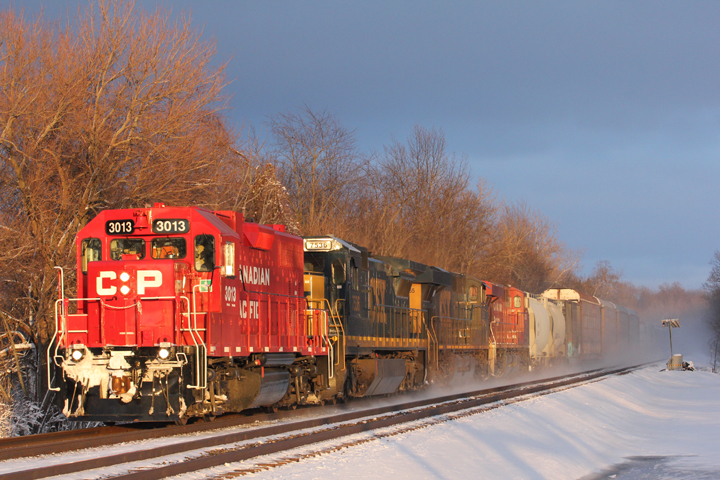

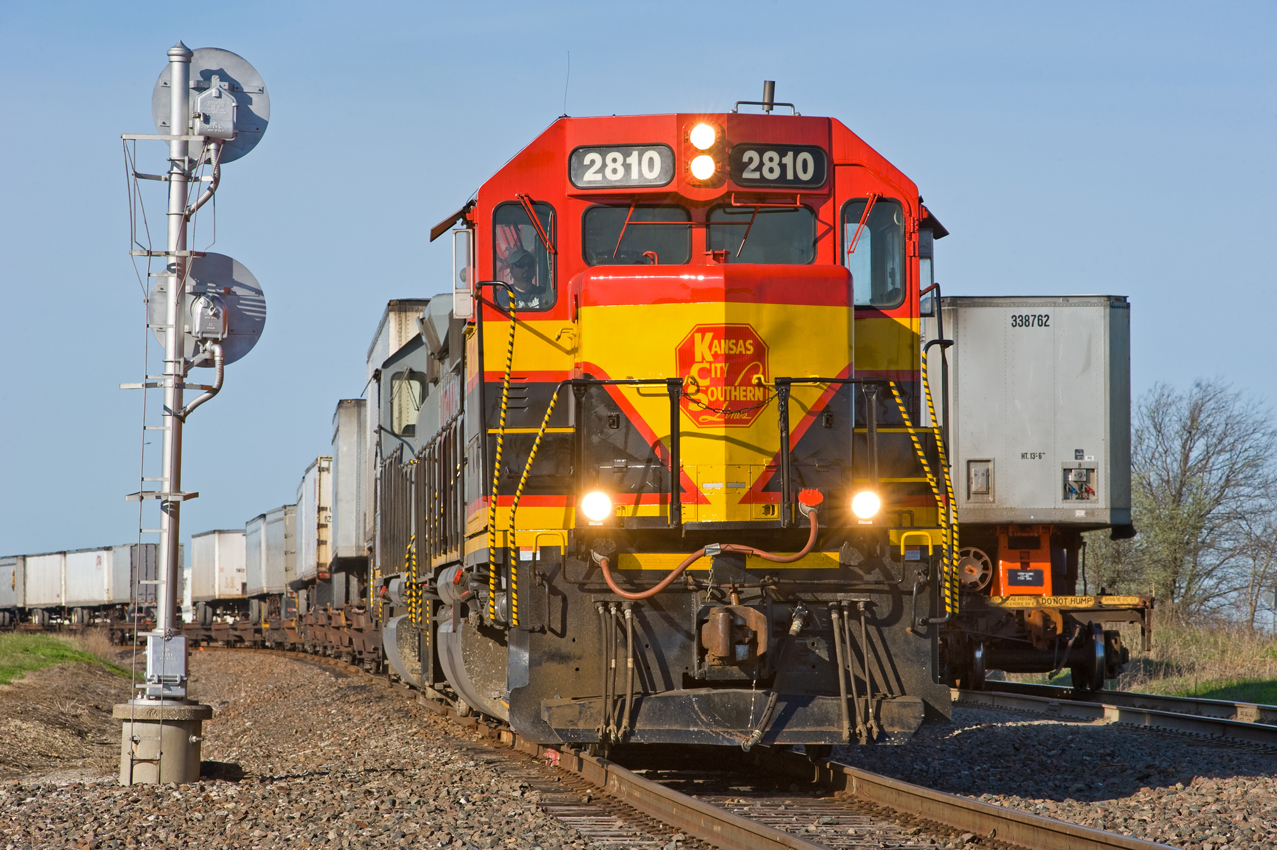
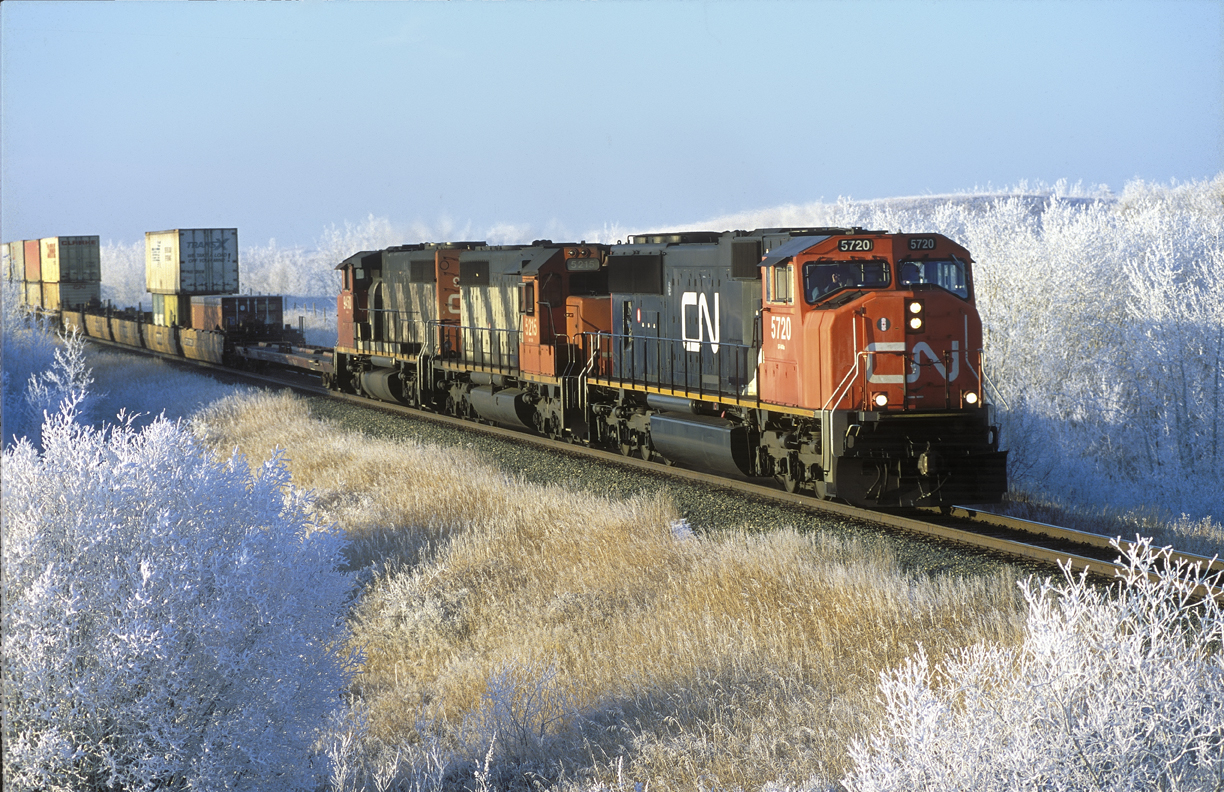
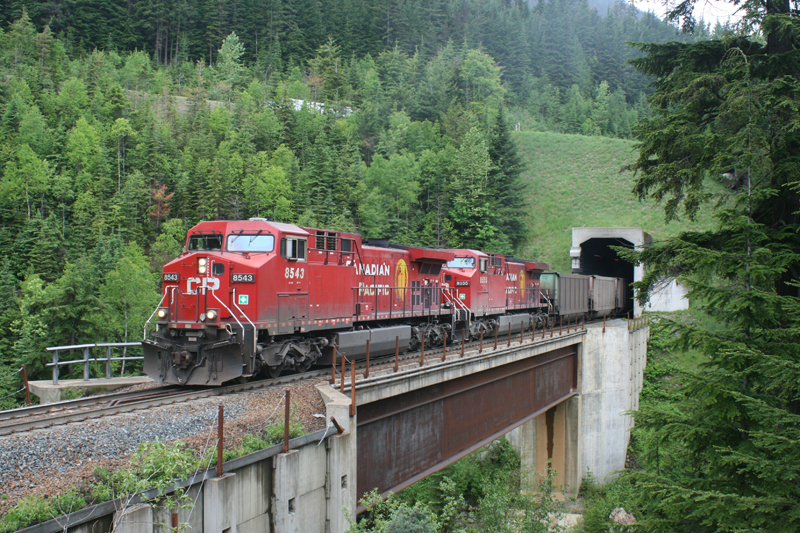
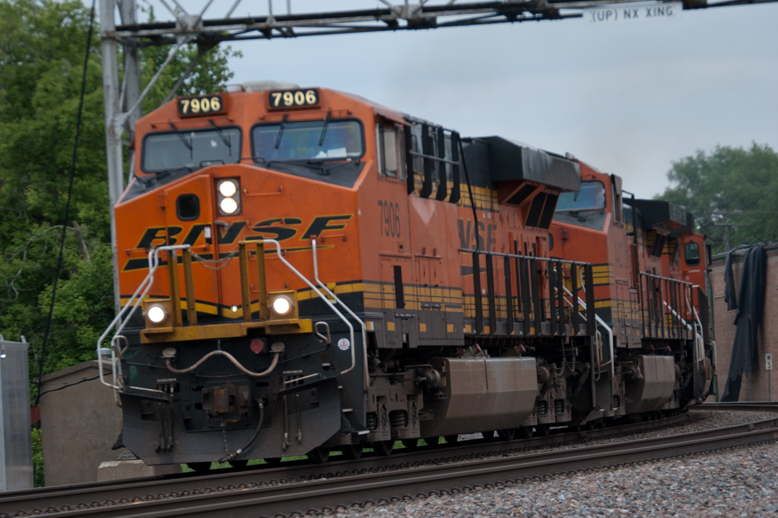


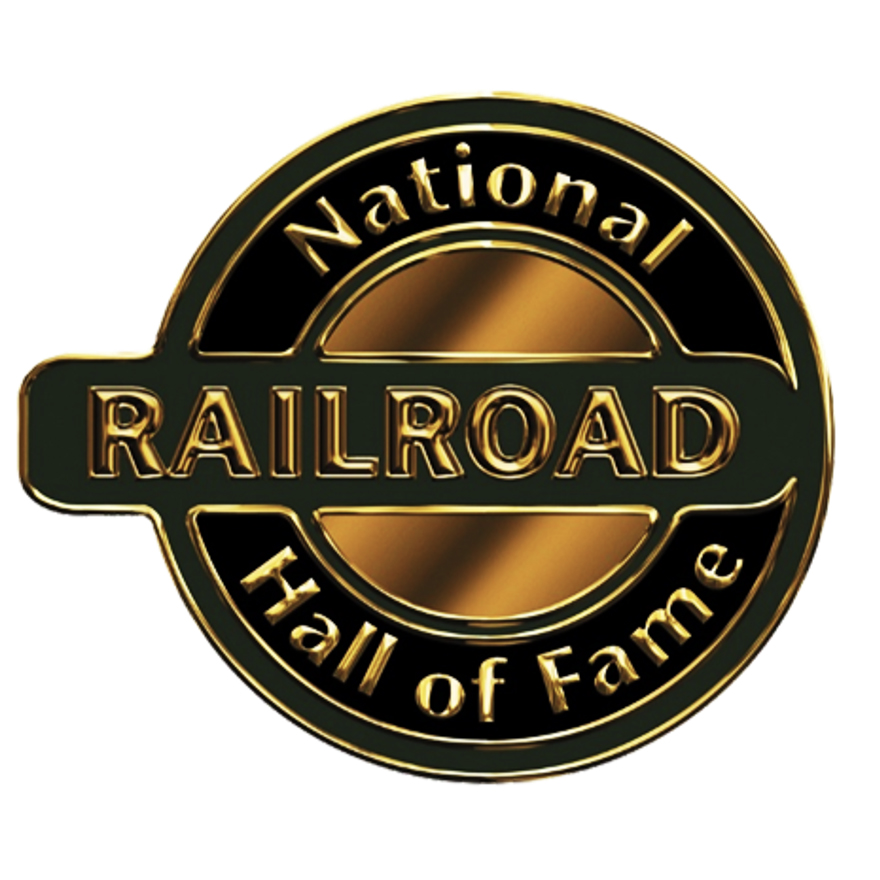
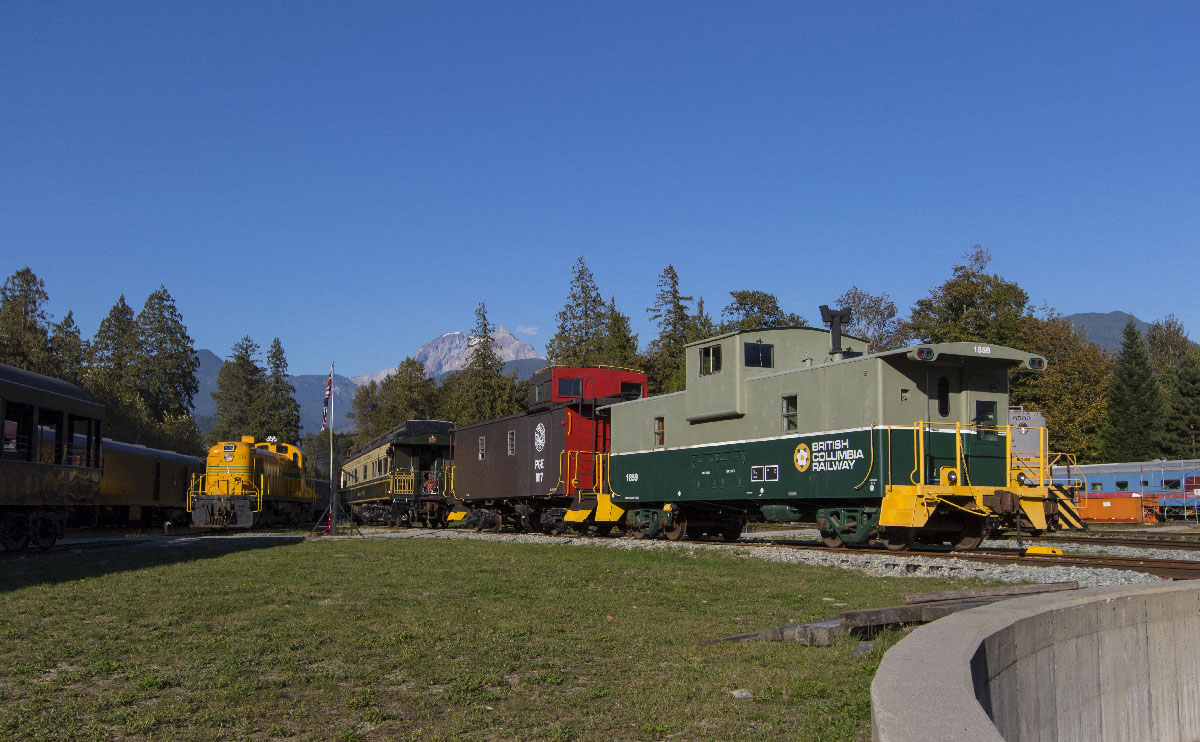

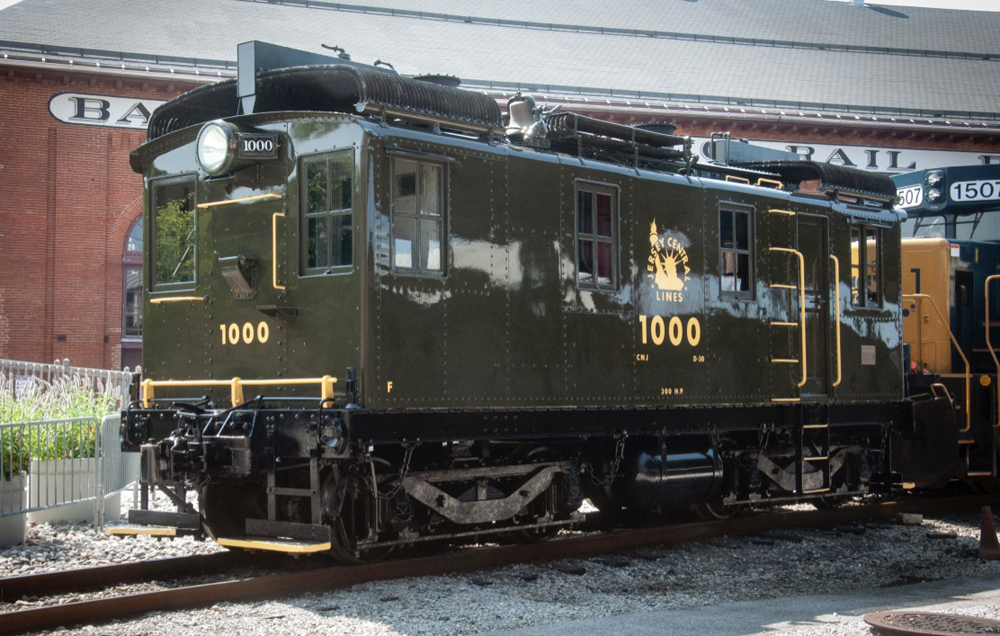




This is the best analysis of the current merger prospects that I have read.
CP,NS and KCS great merger
This is all very interesting. I would hate to see another merger though. Right now things are perfect I think, railroad-wise.
I dont want another merger!
So this is re-print from 2005??